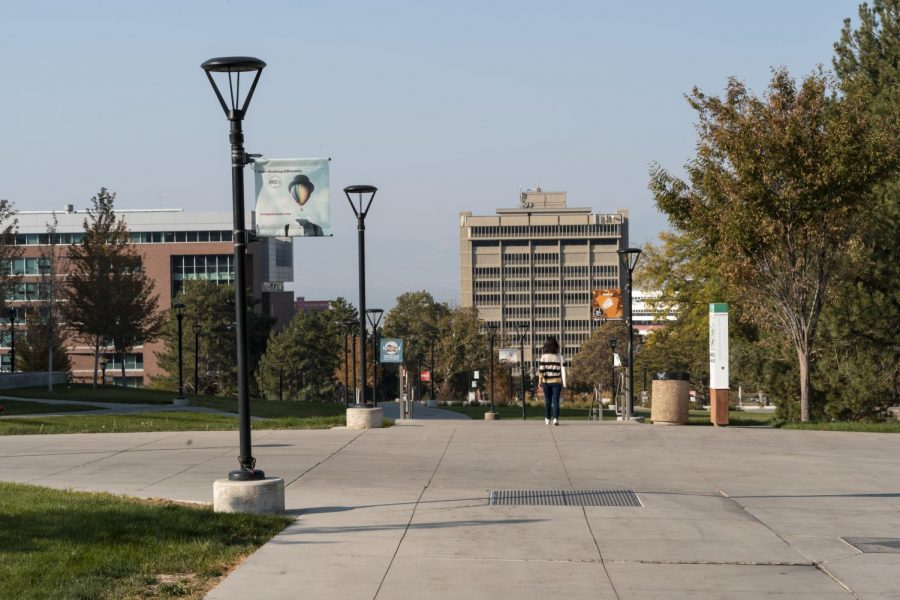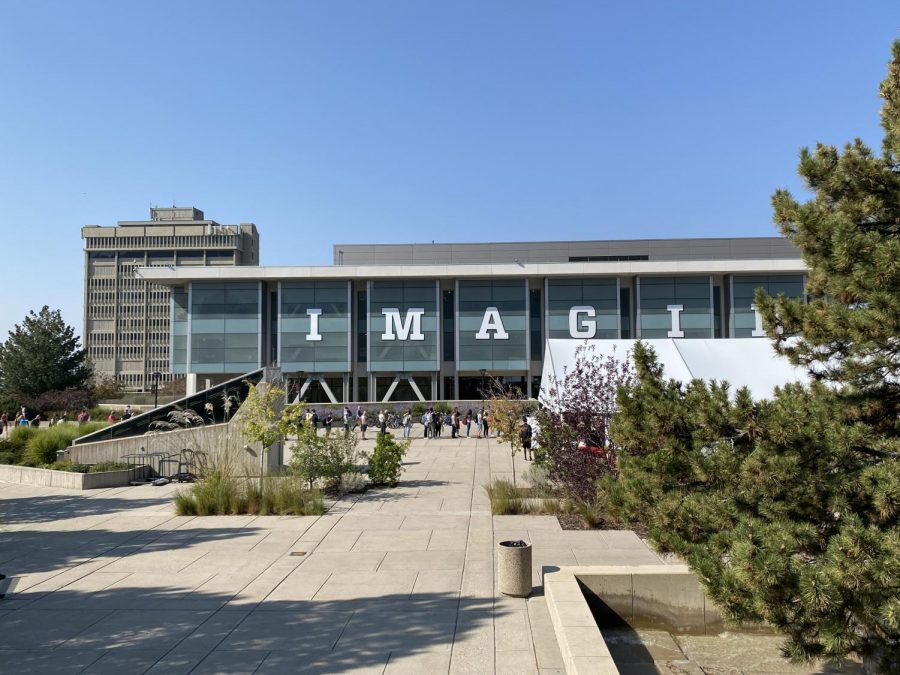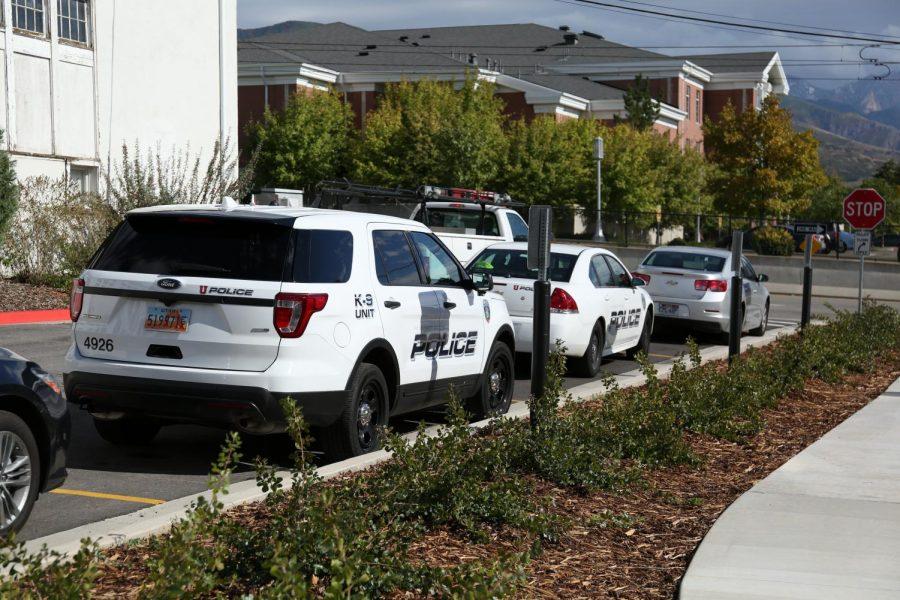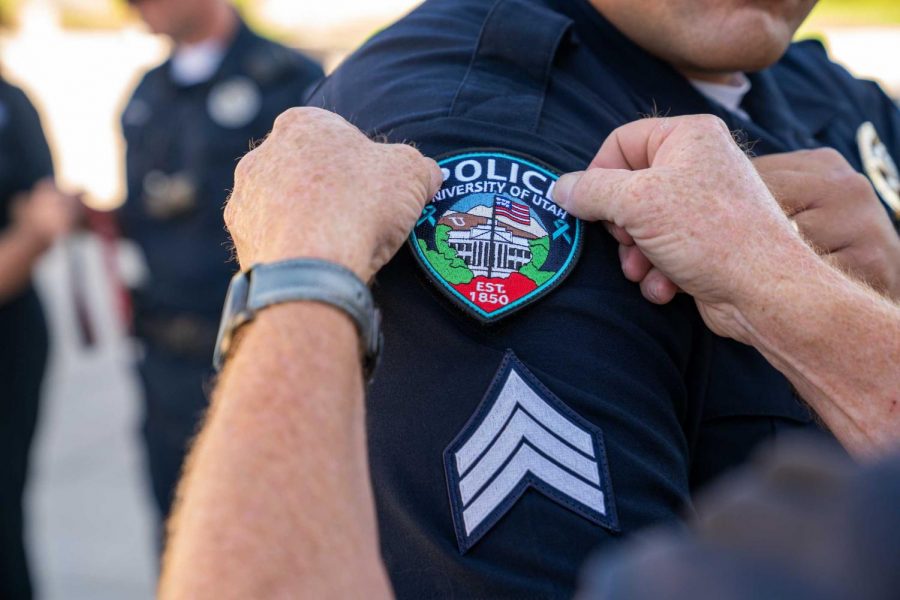It was 3:30 a.m. one early spring morning last year when she called her mother to ask for help. At first, her mother didn’t understand what had happened, only that her daughter had been hurt. After a few minutes, Alison — here identified by a pseudonym — told her mother she had been raped.
Earlier that night, Alison and a friend whom she had known for over a year — a student government leader — had been hanging out in her dorm on the U’s campus. She had noticed that he had been upset lately, and she thought he may have been struggling. When he asked for somewhere to stay, she said yes. And then he turned on her.
Alison and her mother traveled to the University Hospital for medical care. A sexual assault evidence test, colloquially referred to as a “rape kit,” was administered. According to the police incident report, an officer arrived at the emergency room to speak with Alison around 5:00 am.
Alison chose to press criminal charges through the U’s campus police, and she filed a complaint with the school’s Title IX coordinator at the Office of Equal Opportunity and Affirmative Action. Using both systems meant she would not have to see the perpetrator at school while he was being criminally investigated.
According to Alison’s mother, when the investigation through Title IX was completed, it was found that he was more than likely guilty. He was sanctioned by the U in the form of expulsion and an order to not trespass on university property, which he appealed. The appeal process lasted 10 months. Alison experienced significant anxiety over both the wait and the prospect of having to appear for a second time before a council of professors and fellow students to testify about what happened to her. When it was settled, he was still under sanction, and he was held responsible for the assault. He left his position in student government, and transferred to another school. The U was not required by law to inform his new school that he had been found responsible for a sexual assault on campus.
The process of pressing criminal charges didn’t go as smoothly as Alison and her mother anticipated. The two said campus police didn’t return phone calls for long periods of time, and they felt the chief of police and the detective working Alison’s case were both avoiding them. As it seemed less and less likely that the police would help, Alison’s mother tried to handle as much of the contact with police as possible to help her daughter.
“They seemed very slanted toward the perpetrator,” said Alison’s mother. “I felt that they were not very empathetic to [my daughter].”
The two were finally able to reach the detective when they called from a different phone number. When they did, they were told the district attorney wasn’t going to prosecute.
Upon being contacted by Alison’s mother, the DA’s office told them they wouldn’t prosecute, because they believed Alison had consented to the sexual contact, despite having previously made Alison and her mother aware that, at one point during the investigation, her alleged rapist admitted she said “no,” twice during the rape, and he told investigators she had never said yes. Alison’s mother said the contact at the Salt Lake County DA’s office told her “he believed that it was like when a child asks for a piece of candy … eventually you give the child the piece of candy.” Documents obtained from the Salt Lake County District Attorney’s office indicate they declined to move forward with prosecution due to “evidentiary concerns.”
At some point during the investigation, the alleged rapist’s story changed: he admitted sexual contact, but he also claimed it was consensual.
Alison sustained injuries during the assault, and while rape kits sometimes include photos of such injuries, Alison’s rape kit wasn’t processed. Admitting sexual contact meant the kit wasn’t tested. Because the rape kit wasn’t processed and he wasn’t prosecuted, his connection to a violent sexual assault was never linked to his name in any database. He also can’t be named by news organizations, including The Daily Utah Chronicle.
The attorney working the case told her it wasn’t true, but Alison’s mother came away with the opinion that they only take the cases they feel they can win in court. Research Alison’s mother did showed that only six percent of reported sexual assaults in Salt Lake County are prosecuted.
They expected that, when they reported a crime and did everything right, “everything you’re supposed to,” the police would take them seriously and “the bad guy [would] be punished.”
“It was completely shocking to find out that’s not what happens in Utah.” Alison’s mother said she felt the police weren’t there “to protect and serve” her daughter.
At the time of publishing, campus police and the U declined to provide the Chronicle with the complete police report, saying the documents are protected because releasing them “would impact the privacy of both the victim and the suspect, who was never charged,” and because their release may make victims less likely to report to the police and suspects less likely to “participate in investigation and enforcement proceedings.”
The Office of Equal Opportunity and Affirmative Action, which takes charge over Title IX processes, also declined to provide the Chronicle with documents related to the case, citing education privacy laws. However, a section (see 34 CFR §99.31(14)(i)) of that law says universities can release disciplinary records if it was found that the student was responsible for a violent or a sex crime, as in this case. According to Frank D. LoMonte, Executive Director of the Student Press Law Center, in that case, the “disciplinary outcome is a matter of public record and it cannot be withheld…on the basis of student privacy”.
The Chronicle attempted multiple times to contact the accused for comment. He didn’t return phone calls.
Only Six Percent
Six percent of sexual assault cases reported in Salt Lake County are prosecuted, according to a 2014 study conducted by Dr. Julie Valentine, a BYU researcher and forensic nurse, who had randomly chosen rape cases dating from 2003 to 2011. The study found multiple reasons for this: victims often didn’t want to continue, couldn’t be contacted, or couldn’t participate.
The Salt Lake Tribune reported at the time that officials in Utah’s justice system emphasized that most of the cases didn’t make it to the DA’s office because they were shut down by investigators, or that the process of investigation was so grueling and retraumatizing that victims often couldn’t stand to see it through. However, The Salt Lake Tribune also noted that advocates of sexual assault victims argued “investigators and prosecutors have not done all they can to make the process more accommodating to victims and more consistent from agency to agency and from case to case”.
That same study also found that prosecution rates in Salt Lake County were lower than in two comparable sites, which had prosecution rates of nine and 15 percent.
These reasons are all understandable, if perhaps preventable. But Alison’s case meets none of the criteria as to why a case in Salt Lake County typically isn’t prosecuted.
Will it happen again?
Alison’s story isn’t unique. Many studies have collected statistics on sexual assault. According to the National Sexual Violence Resource Center, it’s estimated that between 18 and 25 percent of college women are victims of “attempted or completed rape” during the course of their college career. The Rape Abuse and Incest National Network (RAINN) found that 11.2 percent of all college students, male and female, experience rape or sexual assault. A recently released sexual assault climate survey done of students at the U found “13 percent of respondents experienced sexual assault since coming to the U.”
A 2007 study funded by the U.S. Department of Justice estimated that between 15 and 20 percent of college sexual assault cases are reported to police, let alone prosecuted. The study also found that those numbers had not meaningfully changed over the past two decades.
The U survey also found that students felt the school would be responsive if they reported a sexual assault, but 52.4 percent didn’t know where to report such a crime.

According to campus police’s annual Clery report there were 41 reported sex offenses, 12 reports of domestic violence, three cases of dating violence and 32 reported instances of stalking made at the U during 2015. These rates are higher at the U than at other universities in the state when adjusted for total headcount.
Wade Cole, associate professor of sociology at the U, said “it is possible that the U’s participation in the national ‘It’s On Us’ campaign contributed at least partially to the uptick.” He explains, “an increase in reported sexual assaults does not necessarily mean that the actual incidents of assault increased. Campaigns that raise awareness about assault can empower victims to come forward and report in greater numbers, making it appear that more assaults are occurring.”
He says it’s called an “information paradox.”
“Increased reports of sexual assault as a result of the ‘It’s On Us’ campaign can make it appear that the campaign itself was ineffective. In reality, such a trend would probably suggest that the campaign gave voice to victims who might otherwise have stayed silent,” Cole said.
Despite the U’s high numbers compared to other universities, many studies indicate these numbers are still not representative of the rates of sexual assault and other related crimes on college campuses. A 2002 study done by researchers from the University of Massachusetts and Brown University School of Medicine found that the 120 “undetected rapists” they surveyed were responsible for 1,225 “separate acts of interpersonal violence, including rape, battery, and child physical and sexual abuse.” The men averaged 5.8 rapes each, as defined by United States law.
A study conducted in 2015 and published in the JAMA Pediatrics attempted to revisit and retest those results. While those researchers found that “most men who committed college rape only perpetrated rape during one academic year,” they never mentioned whether the men in their sample offended repeatedly within that time frame.
Alison believes her alleged rapist and former friend sexually assaulted people before her, and she believes he will do it again. Her mother also says that is their biggest fear in regard to him, besides that he might return to the state of Utah.
“The next time he does this, there’s no record on file of him doing this,” Alison’s mother said. “There’s no pattern. He can get by with this again and again and again.”
@EliseAbril
Connor Richards, opinion writer, and Julie Hirschi, editor-in-chief, contributed to this article.



















SH • Dec 17, 2016 at 8:25 am
It is ludacris that this was never followed through on. This poor girl was let down by everyone involved; the medical staff not completing the rape kit, the police not doing their job (of course the rapist is going to change his story from she said no twice to it was consentual, how inept are they), the DA deciding not to prosecute and the fact that once kicked out of the University they didn’t have to let his next university know why. Well done everybody, you just let a rapist set the course for his next unsuspecting victim.
SH • Dec 17, 2016 at 8:25 am
It is ludacris that this was never followed through on. This poor girl was let down by everyone involved; the medical staff not completing the rape kit, the police not doing their job (of course the rapist is going to change his story from she said no twice to it was consentual, how inept are they), the DA deciding not to prosecute and the fact that once kicked out of the University they didn’t have to let his next university know why. Well done everybody, you just let a rapist set the course for his next unsuspecting victim.